06-010
China Manned Space Exhibition
A few weeks ago, a poster inside a metro station caught my attention. It was about the China Manned Space Exhibition organized by the China Manned Space Program and the Hong Kong government. On one of the weekends, I went there with my son.
The exhibition took place in the Hong Kong Science Museum instead of the Hong Kong Space Museum. En route to the exhibition hall, there was a big red billboard welcoming all visitors.
The exhibition had a title: Chasing Dreams across the
Heavens. The hall was not very large. It only took me half an hour to visit all
the exhibits. But the exhibition was still quite informative. It was a
limited-time exhibition. At the time of writing, the exhibition had already
ended. I am going to show you here what I saw inside.
The entrance to
the exhibition hall was decorated in the style of a traditional Chinese garden.
On the left side of the entrance, there were two slogans, one saying “Dream
Paradise” and the other saying “The Quest Begins”. On the right side of the
entrance, the slogan showed “Starry Palace”. The three slogans were actually
showing the three milestones of our space program that we have achieved so far.
First, we had a dream of space travel. Then we started our quest to the space
and now, we have built our starry palace. Tiangong space station literally
means “Sky Palace”.
At the
entrance, there was a big screen showing the brief history of our space program
and the life inside the Tiangong Space Station. Visitors could see how our
astronauts celebrated Chinese New Year inside the space station.
The most
eye-catching exhibit was definitely the re-entry module of Shenzhou-13. It was
not a model but the real one. Re-entry module may sound like a bit old school
but it was not only a heat-resistant capsule with a parachute on top. There
were also retrograde rockets at the bottom to ensure a soft landing.
The other
eye-catching exhibits were the two large-size 1:15 models of our existing
rockets, the Long March-5B Carrier Rocket and the Long March-7 Carrier Rocket.
Long March-5B was used for human transport while Long March-7 was for cargo.
On the other
side of the exhibition hall was another large-size 1:15 model. This time it was
the Tiangong Space Station. Next to it was the end effector of the robotic arm
used on our space station. According to the exhibition, “The end effector is
used by the robotic arm to crawl, grab, connect and release objects, and can
support astronauts’ extravehicular activities. Equipped with an integrated
binocular camera, the effector can conduct high-definition inspection and
high-precision target measurements on the cabin surface. It is capable of
capturing target spacecraft with mass up to 25 tons.” The effector displayed in
the exhibition was not a model but a real component.
Let us move on to see the side panels in the exhibition
hall. The first section was a brief summary of the achievements of the China
Manned Space Program. The first panel showed the 14 system components of the
program. Components included Astronaut System, Space Application System, Manned
Spacecraft System, Cargo Spacecraft System, Long March-2F Carrier Rocket
System, Long March-7 Carrier Rocket System, Long March-5B Carrier Rocket
System, Jiuquan Launch Site System, Wenchang Launch Site System, The Tracking,
Telemetry & Command and Communication System, Space Laboratory System,
Space Station System, Landing Site System, and Xuntian Space Telescope. Apart
from the last component, all other 13 components had already been achieved.
The
next panel showed the details of the Space Application System. The system
“utilizes manned spacecraft as a platform for conducting scientific experiments
and research in areas like space life sciences, microgravity fluid mechanics
and combustion science, space material and fundamental physics in microgravity.
Additionally, it carries out astronomical and Earth observations, validating
new technologies for space applications, thereby advancing the field of space
science and benefiting technological applications.” The remaining parts of the
panel showed the achievements in detail and different stages of the space
station.
The
center part of the exhibition hall showed the Astronaut System. This system
involves training and providing comprehensive support for the astronauts. Some
training photos were displayed on the panel. It also disclosed that a total of
39 astronauts had been trained in 3 batches and 20 of them had already embarked
on space missions. 5 astronauts, Chen Quan, Wu Jie, Pan Zhanchun, Zhao
Chuandong & Li Qinglong, had retired without flying. Names of the remaining
14 candidates had not been disclosed yet. They all belonged to the third batch.
Another
panel showed the manufacturing of different components of the Astronaut System.
But the most interesting part was the equipment that supported the life of our
astronauts. Apart from photos shown on the exhibition panel, there were some
real samples of the equipment inside the hall.
The
first one was a food refrigerator. The same model was being used on Tiangong
for storing space food. The other interesting equipment was the Chinese
Medicine Diagnostic Device. It looked like a very complicated blood pressure
monitor. No explanation was given on how it worked. But imagine that you were
feeling sick in a space station and being treated with Chinese medicine, that
was cool!
Another
exhibit was the aviation logbooks. Too bad that we were not allowed to see what
was written inside. I really wanted to know how detailed their space journeys
were recorded.
And
the most interesting exhibits were definitely the space food. Let us see what
our astronauts were eating inside the “Sky Palace”. For dishes made with staple
foods, there were mixed fried rice, fried noodles with ham & carrot, and
cabbage dumplings. As in most Chinese restaurants, condiments were also
important even in space. We saw bottles of “space” sweet & sour sauce and
sweet & chili sauce. Since it was also new year time, special Chinese New
Year dishes were shown in the exhibition. There were roasted pork chop, white
king oyster mushroom, Chinese spring roll, pickled spinach, and beef with
potatoes. All 5 new year dishes had special Chinese names symbolizing good
fortune.
After
talking about the food part, it was time to also talk about the toilet part.
Water is essential to life but is also a very heavy substance. Lifting water up
to the space is very expensive. To become an astronaut, one must accept that
there would not be any fresh water in the space station. Water up there was all
recycled. Yes, astronauts were actually drinking each other’s pee. And this was
the machine to purify the urine to make it drinkable again.
The
final section of the exhibition was about the future of the China Manned Space
Program. Three models were shown here. The first one was a model of the new
generation manned spacecraft in 1:4 scale. The new generation manned spacecraft
was a reusable spacecraft, designed to carry three astronauts in lunar missions
or seven astronauts in low-Earth orbit missions.
To
complete a lunar mission, a lunar lander was needed. Another model in 1:4 scale
replicated our future moon lander. “The lunar lander is designed for
transporting astronauts between the lunar orbit and the lunar surface. It can
carry a lunar rover along with several scientific payloads. Comprising a
landing module and a service module, the lunar lander serves as a centre hub
for survival on the Moon, providing services such as energy supply and data
management to support astronauts’ habitation and activities on the lunar
surface.”, according to the exhibition panel.
To
lift a bigger spacecraft up to the space, we needed a bigger “engine”. A large
model in 1:25 scale showed the future generation of manned carrier rocket.
The
last panel showed the ambition of our space program. We expected to land our
first taikonaut on the moon “in the foreseeable future”. And by 2050, we
expected to have our first Mars landing. Could we do this? Let us see.
Last but not least, a guest book was displayed at the exit of the exhibition hall. The China Manned Space Exhibition was kicked off with the visit of four taikonauts to Hong Kong. Inside the guest book were the autographs of the deputy director of China Manned Space Agency, Mr. Lin Xiqiang, and the four visiting taikonauts, Liu Boming, Wang Yaping, Chen Dong, and Zhang Lu.
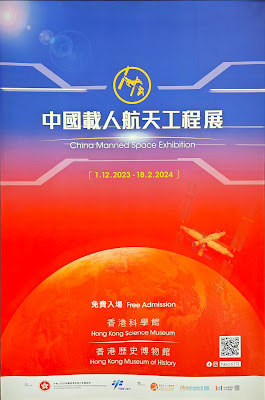








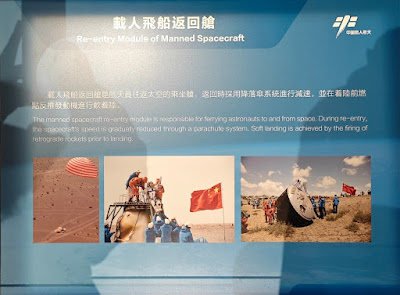










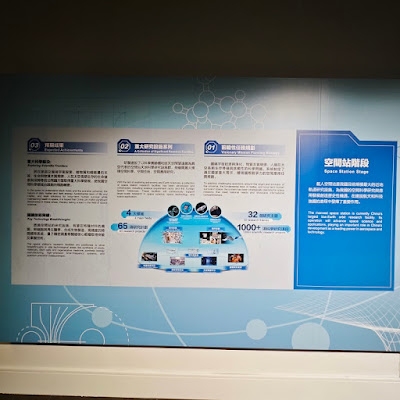



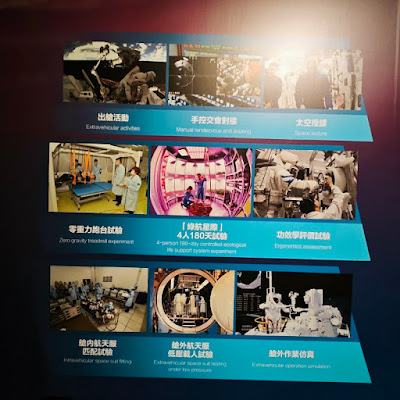





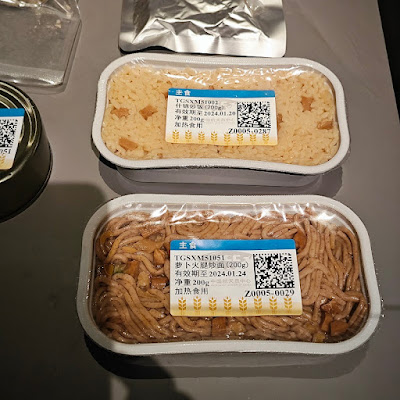


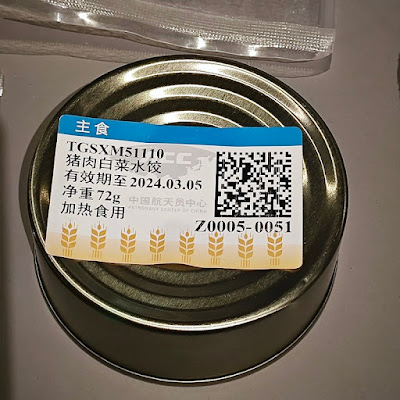



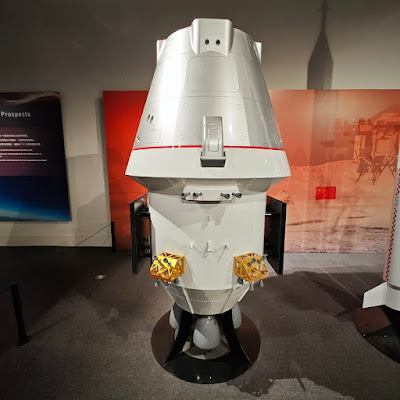






No comments:
Post a Comment